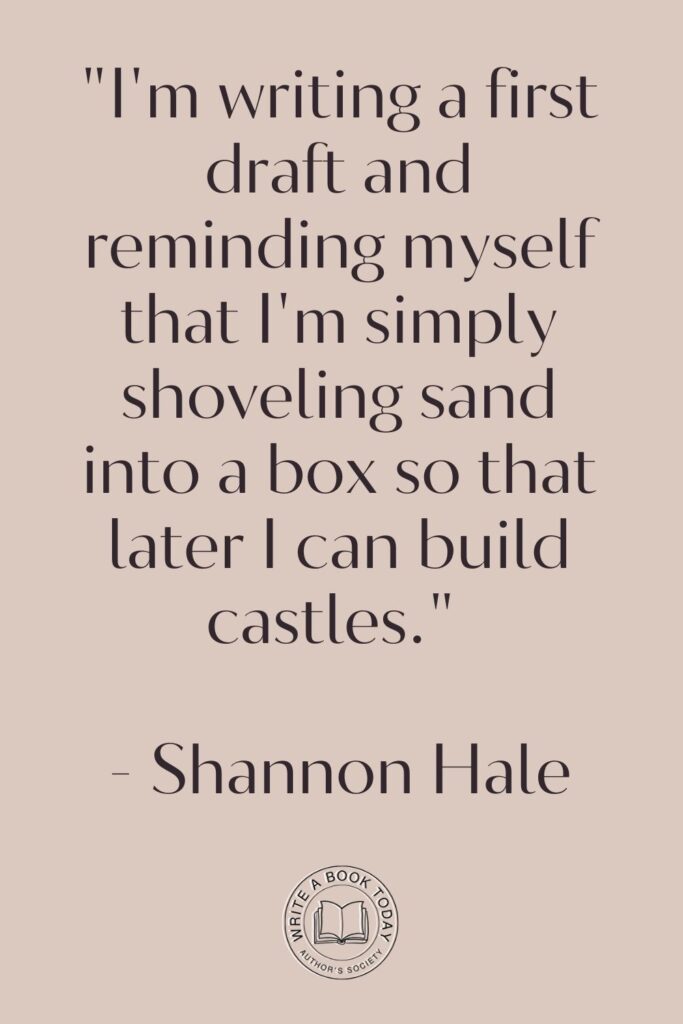Have you ever read a book where the dialogue seems to drag on endlessly, making you wish the characters would get to the point? In storytelling, concise character dialogue is a powerful tool that can transform your narrative from sluggish to dynamic.
Imagine your characters speaking with the precision of a well-crafted haiku, each word packed with meaning and emotion. This blog post aims to guide you through the art of crafting succinct dialogue that captivates readers, enhances storytelling, and breathes life into your characters.
We’ll explore the significance of brevity, common pitfalls to avoid, and techniques to help you say more with less. Get ready to revolutionize your dialogue writing skills and make every word count.
Understanding Concise Character Dialogue
At its core, concise character dialogue distils speech to its essence. It’s the art of saying just enough to convey meaning without unnecessary fluff.
This dialogue keeps readers engaged and leaves room for interpretation and a deeper connection. By focusing on what’s essential, writers can create impactful and memorable conversations.
No marketing platform? No social following? No problem!
Publisher Rocket helps you market your debut novel like a pro.
It’s a gamechanger for debut authors – try it today!


What Is Concise Character Dialogue?
Concise character dialogue is a technique that strips away extraneous words and focuses on clarity and brevity. It’s akin to a sculptor chiselling away at a block of marble to reveal a statue.
In dialogue, every word should serve a purpose, whether revealing character traits, advancing the plot, or creating tension. Think of it as a dance between what is said and what is left unsaid.
Consider the dialogue in Hemingway’s stories, where much is left to the imagination. His characters often communicate with an economy of words, allowing readers to fill in the gaps.
This style respects the reader’s intelligence and invites them to engage more deeply with the text. Mastering concise dialogue can achieve a similar effect, crafting exchanges that resonate long after they are read.
Why Brevity Matters in Dialogue
Brevity in dialogue matters because it mirrors real-life conversations, which are often quick and to the point. Long-winded dialogue can bog down a story, making it feel sluggish and unrealistic.
In contrast, concise dialogue propels the narrative forward, maintaining momentum and keeping readers hooked. It also allows for greater subtext, where the unsaid becomes as important as the spoken words.
To enhance your dialogue, consider the emotional undertone of each exchange. Characters often say one thing while feeling another, and this duality can be expressed through concise dialogue. Focus on the emotions driving the conversation and let them guide the words.

Common Pitfalls in Dialogue Writing
Even the most seasoned writers can fall into traps when crafting dialogue. Identifying these pitfalls is the first step towards improvement. Here, we’ll explore some common mistakes that can hinder your dialogue and how to avoid them.
The Overly Verbose Character
An overly verbose character can quickly become a reader’s nemesis. While letting your characters wax poetic is tempting, excessive verbosity can dilute their impact.
Too many words can obscure a character’s essence instead of adding layers, making it feel unrealistic or tedious. People rarely speak in paragraphs; they converse in sentences, often punctuated by pauses and interruptions.
To counteract verbosity, focus on what each line of dialogue needs to achieve. Does it reveal something about the character? Does it move the plot forward? If not, it might be worth trimming. Remember, in dialogue, less is often more.
Dialogue That Fails to Move the Plot
Dialogue should be a vehicle for the story, not a detour. Readers may lose interest when characters engage in conversations that don’t contribute to the narrative.
Effective dialogue should always serve a purpose, whether it’s building tension, revealing backstory, or developing relationships. If a conversation feels stagnant, ask yourself how it can be revised to add value to the story.
To ensure your dialogue moves the plot, outline the main beats of the conversation before writing. Identify the key points that need to be addressed and structure the dialogue around them. This approach keeps the conversation focused and purposeful.
Techniques for Crafting Concise Dialogue
Crafting concise dialogue is both an art and a science. You can refine your characters’ voices and create resonating dialogue by employing specific techniques. Here are some strategies to help you embrace brevity in your writing.

Embracing Brevity: Key Strategies
One effective strategy for embracing brevity is to prioritize action over exposition. Let your characters show rather than tell. This makes the dialogue more engaging and allows readers to infer meaning through actions and reactions.
Additionally, consider using interruptions and pauses to reflect natural speech patterns. People often interrupt each other, especially during heated exchanges, and capturing this can add realism to your dialogue.
Another technique is to write dialogue as if it were poetry. Focus on rhythm and cadence, choosing words that carry weight and emotion.
Each line should be deliberate, contributing to the overall mood and theme of the scene. By treating dialogue as an art form, you can create concise and impactful exchanges.
Using Subtext to Convey More with Less
Subtext is the unspoken dialogue beneath the surface, the iceberg lurking beneath the waterline. What characters don’t say often speaks the loudest.
Mastering subtext involves understanding your characters’ motivations and desires and allowing those to seep into their words and actions. This technique adds depth to your dialogue, inviting readers to read between the lines.
Practice writing scenes where the true meaning is hidden beneath the dialogue. Having characters say one thing but mean another allows the tension to simmer below the surface. This subtlety can create a richer, more engaging narrative.
Google Docs is for notes. Scrivener is for novels. Upgrade your writing game and try it for free today!

Effective Dialogue Examples
Studying examples of effective dialogue can provide inspiration and insight into crafting your own. By analyzing how other writers achieve brevity, you can apply similar techniques to your work.
Analyzing Great Dialogue in Literature
Great dialogue in literature often reveals character and advances the plot simultaneously. Consider the exchanges in Jane Austen’s novels, where wit and brevity go hand in hand.
Her characters often communicate more through what they imply than what they say outright. This allows for a rich interplay of subtext and emotion, drawing readers into the social intricacies of the time.
Another example can be found in Raymond Carver’s works, known for his minimalist style. Carver’s dialogue is sparse yet full of meaning, reflecting everyday people’s struggles and desires. By studying these literary examples, you can better understand how to use dialogue effectively in your writing.
Film and Television: Lessons in Brevity
Film and television provide a visual medium where dialogue must compete with imagery for attention. As such, screenwriters often employ concise dialogue to maintain pacing and engagement.
Shows like “Breaking Bad” and films such as “Pulp Fiction” demonstrate how brevity can enhance tension and character development. In these examples, dialogue is a tool for revealing character and advancing the plot without unnecessary exposition.
By observing how dialogue functions in visual storytelling, writers can learn to craft succinct and powerful exchanges. This approach ensures that every spoken word serves a purpose and contributes to the narrative arc.

Engaging Your Readers with Dialogue
Engaging readers with dialogue involves creating authentic voices and inviting reflection. Focusing on these elements allows you to craft conversations that resonate and linger in the reader’s mind.
Creating Authentic Character Voices
Authentic character voices are crucial for engaging dialogue. Each character should have a distinct way of speaking that reflects their background, personality, and experiences.
This authenticity adds depth and believability to your characters, making them more relatable to readers. To achieve this, consider factors such as vocabulary, speech patterns, and tone.
A well-developed character voice can make dialogue feel natural and compelling. Experiment with different voices by writing monologues for your characters.
This exercise helps you explore their inner thoughts and speech habits, allowing you to refine their dialogue. Remember, the goal is to create unique and true voices for the characters you’ve created.
Feeling lost with your debut novel?
Fiverr Pro connects you with expert editors, designers, and marketers – everything you need to get your book ready for success!

Inviting Reader Reflection Through Dialogue
Dialogue that invites reflection encourages readers to engage with the text on a deeper level. By posing questions or presenting dilemmas within conversations, you can provoke thought and invite readers to consider their own perspectives.
This technique enhances the reading experience and fosters a connection between the reader and the narrative.
Incorporate silence or pauses in your dialogue to give readers time to reflect. These pauses can be used to emphasize important points or allow the conversation’s weight to sink in. This approach adds layers to your dialogue, making it more impactful.
Building Your Writing Skills
Improving your dialogue writing skills is an ongoing journey. By practicing and refining your techniques, you can develop a unique voice that resonates with readers. Here are some exercises to help you hone your craft.
Exercises to Improve Dialogue Writing
One effective exercise is writing dialogue-only scenes, where the entire exchange occurs through conversation. This forces you to rely on dialogue to convey character, setting, and plot.
Another exercise is transcribing real-life conversations, paying attention to how people speak naturally. This practice can help you capture the rhythms and nuances of everyday speech.
| Exercise | Description |
|---|---|
| Dialogue-Only Scene | Craft a scene using only dialogue to convey plot and character. |
| Transcription Practice | Transcribe real conversations to understand natural speech patterns. |
| Character Monologues | Write monologues for your characters to explore their voices. |

Finding Your Unique Voice in Dialogue
Finding your unique voice in dialogue involves embracing your style and experimenting with different approaches. Don’t be afraid to take risks and push boundaries in your writing.
By staying true to your vision, you can create distinctive and resonant dialogue. Remember, every writer’s journey is unique, and finding your voice is integral to developing your craft.
To cultivate your voice, read widely and analyze how other writers handle dialogue. Pay attention to what resonates with you and why.
Use these insights to inform your writing, allowing your voice to evolve naturally. Ultimately, your unique voice will set your dialogue apart and make it memorable.
Conclusion
In storytelling, mastering the art of concise character dialogue is a skill that can elevate your narrative and captivate your audience. By understanding the power of brevity, avoiding common pitfalls, and employing effective techniques, you can create dialogue that resonates and enriches your story.
Remember, the key is to say more with less, allowing your characters’ words to carry weight and meaning. As you continue to refine your dialogue writing skills, embrace the journey and let your unique voice shine through. Happy writing!








